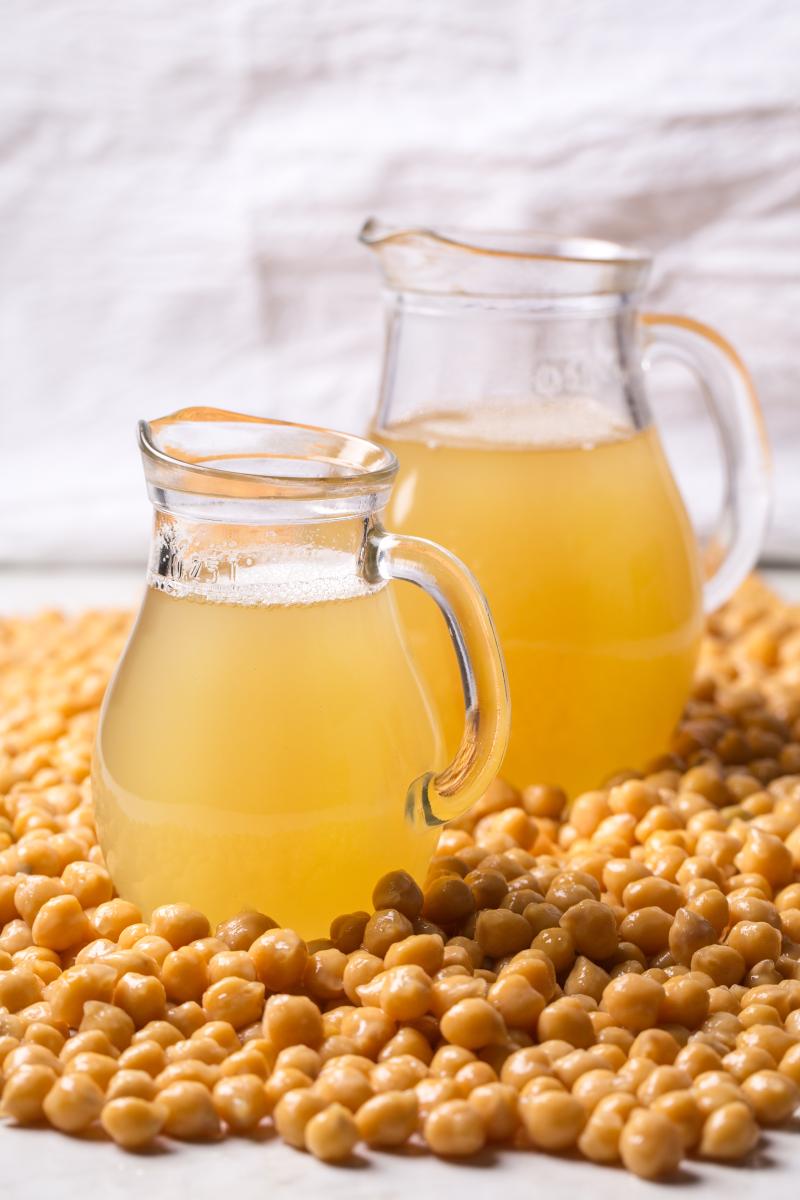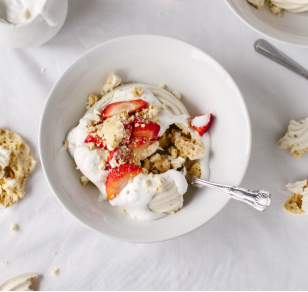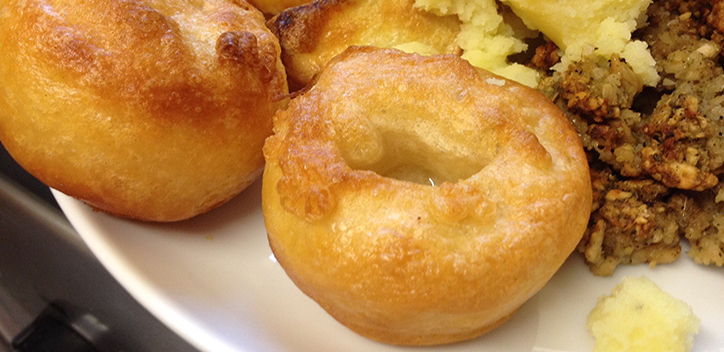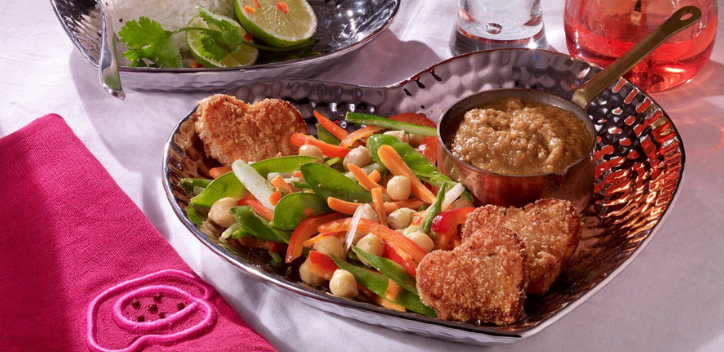If you've looked at vegan recipe pages in the last few years, you've probably noticed the use of an ingredient called "aquafaba", especially as an egg white replacement.
Whether you've heard of it before or not, it's a versatile ingredient to have in your vegan cooking repertoire, so let's take a look at what it is and how you can use it to make some awesome vegan dishes!
What is aquafaba?
If you've ever opened canned chickpeas (also known as garbanzo beans) and strained off the chickpea water, then you've tipped some aquafaba down the sink! Aquafaba literally means "bean water", the brine that results from cooking legumes such as beans and chickpeas. The value of this cooking liquid as an ingredient was only discovered in 2015.
Aquafaba is easy to get straight from canned beans but slowly cooking dried beans in water for a few hours until the water turns to aquafaba should give you similar results. Even water from packaged tofu and peas is aquafaba!
Aquafaba can be used as a vegan replacement for egg whites in many sweet and savoury recipes. Its unique mix of starches, proteins, and other soluble plant solids which have migrated from the seeds to the water during the cooking process gives aquafaba a wide spectrum of emulsifying, foaming, binding, gelatinizing and thickening properties. It's often found in vegan meringue and other vegan dessert recipes. It adds fluffy texture and structure to foods, from pancakes to mayonnaise, and is popular in vegan baked goods like cookies and cakes and pizza dough. You can even use chickpea aquafaba to make a vegan version of classic cocktails that normally use egg whites - these will be the star of the show at any vegan party!
Since it's essentially a waste product of cooked beans, aquafaba is often the cheapest (and least processed) way to replace egg whites in vegan recipes.
Aquafaba is:
- Low in calories
- Low in sodium (provided that if you’re using bean juice from canned beans, you’re choosing no added salt or low-sodium varieties)
- Sugar-free
- Cholesterol-free
- Gluten-free
- Free of trans fats
Using aquafaba as an egg replacement
The basics
A simple rule of thumb is to use 3 tablespoons of aquafaba for each whole egg you're replacing or 2 tablespoons of aquafaba for each egg white.
The secret to light and fluffy results in your recipes is to whip aquafaba using a hand mixer or stand mixer until it turns white and foamy - this can take several minutes so be patient! Once fluffy peaks start to form, the whipped aquafaba is ready to use in meringues, icing, etc.
Aquafaba from home cooked chickpeas and beans is generally quite watery, so you'll need to reduce it to a thicker consistency before using it.
Tip: You can decrease the time required to make whipped aquafaba by simply adding 1/4 teaspoon of cream of tartar before you start to whip with your hand mixer. Aquafaba also whips more quickly if it's cold, so use stored aquafaba straight from the refrigerator.
When using aquafaba as an egg substitute in baked goods such as cookies, cakes, muffins, bread or brownies, you can simply use the aquafaba "as is" without whipping.
Note that chickpeas and white beans make a lighter aquafaba that’s more often used in light-coloured dishes like meringues and marshmallows, while aquafaba from darker beans (such as kidney or black beans) can result in a final product that is darker in colour.
Storage
You can store aquafaba - either from canned chickpeas or beans, or your fresh homemade aquafaba - in the refrigerator for a few days in a clean, airtight container. Alternatively, you can freeze aquafaba for later use (an ice cube tray works well to create aquafaba cubes), noting that it's best to freeze it before whipping.
Ready-made aquafaba
If making your own aquafaba sounds too daunting, you could try a commercial aquafaba product. OGGS Egg Alternative Aquafaba is ready to use straight from the carton and is registered with the Vegan Trademark.
Recipe ideas
Now you've learned how versatile aquafaba is, it's time to be inspired by some aquafaba recipes from The Vegan Society - so take the plunge and start making the most of this amazing ingredient!
Vegan meringues
Perhaps the most common use of aquafaba is to make an egg free meringue. This classic meringue recipe is a good place to start and cute meringue kisses are a feature of the celebration fruit crown recipe.
An Instagram-worthy dessert with vegan meringues and coconut cream is yours for the making using this meringue nests with strawberries and cream recipe!
Vegan mayonnaise
Mayonnaise is a handy element of so many recipes. A vegan mayo made with aquafaba is super easy and this homemade coleslaw recipe shows you how.
Vegan icing
Aquafaba can be used to take your vegan icing to the next level! Our Easter nest mango cheesecake recipe incorporates aquafaba, using chickpea juice, icing sugar, lemon juice or vinegar and vegan food colouring, to create a delicious dessert that’s perfect for spring.
If you are searching for a festive recipe look no further than our Christmas chocolate log, which uses aquafaba as an egg white replacement for a creamy chocolate mousse. This involves whipping the aquafaba into stiff peaks which then becomes a great binder.
Both recipes make use of aquafaba to help create a vegan seasonal centrepiece dessert.
Vegan Yorkshire pudding
Do you want to know the secret to fluffy vegan Yorkshire puddings? Of course, it's aquafaba and our easy Yorkshire pudding recipe shows you how.

Love U Katsu
Aquafaba can also be used to "stick" ingredients together and our Love U Katsu recipe uses it as a great replacement egg binder to stick breadcrumbs onto sweet potato hearts. We told you aquafaba is a versatile ingredient!

You're now an aquafaba expert!
You now know what aquafaba is and how to use it. It might sound like a strange ingredient to include in your vegan cooking, but you can see how useful and versatile it is, especially as a vegan egg substitute.
Try out some of the recipe ideas and you'll be an aquafaba pro in no time!
Written by Lee Hawkins
Join The Vegan Society today by completing our quick and simple online form. As a registered charity we rely on our members, and we are so grateful to everyone who supports us. For just £2 a month, your membership will go towards helping us to spread the word of veganism and create a world where animals are free to exist in their own right.
The views expressed by our bloggers are not necessarily the views of The Vegan Society.


